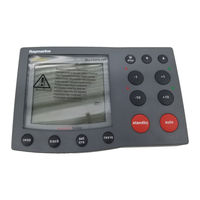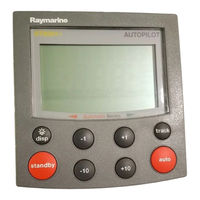Raymarine autopilot Manuals
Manuals and User Guides for Raymarine autopilot. We have 2 Raymarine autopilot manuals available for free PDF download: Owner's Handbook Manual
Raymarine autopilot Owner's Handbook Manual (139 pages)
Autopilot Control Unit
Brand: Raymarine
|
Category: Marine Equipment
|
Size: 2 MB
Table of Contents
Advertisement
Raymarine autopilot Owner's Handbook Manual (137 pages)
Autopilot Control Unit
Brand: Raymarine
|
Category: Marine Equipment
|
Size: 3 MB
Table of Contents
Advertisement

